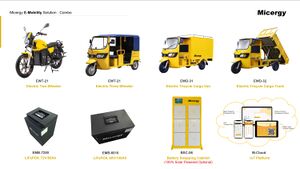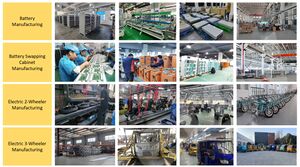Why are fuel-powered three-wheelers more suitable for electric conversion compared with two-wheelers?
Currently, two-and-three-wheelers constitute close to 30% of total motorized vehicles worldwide. In middle and low-income cities, the share is varying between 50% and 90%. Close to half of the global motorized two-and-three-wheeler feet operates in urban areas.
Two-wheelers are predominantly used for ride-hailing and freight delivery services as personal transportation and in paratransit modes. Three-wheelers with bigger space play a similar role to the two-wheelers but carry more passengers and goods.
Two-and-three-wheelers satisfy the mobility needs. Even in cities with a high density of public transport facilities, they still play a significant role as they cater to the frst and last mile connectivity. In middle- and low-income cities, the 2&3 wheelers offer a significantly:
* high route and schedule flexibility
* ease of access (door to door) and
* maneuverability in congested traffic with low operating costs.
Besides the private use, two-and-three-wheelers are also gaining popularity in urban freight distribution for small and medium enterprises due to:
* growing e-commerce
* traffic congestion
* restrictions for urban freight distribution, and
* limited on street parking at destinations.
Though the two-and-three-wheelers play a key role, however, In many countries, old two-and-three-wheelers emit a disproportionate share of transport emissions. Because of this problem, many countries have implemented age-based or emission-based regulations to keep old and pollution-intensive vehicles off the road. However, countries find it difficult to impose such regulations due to stakeholder resistance, leading to limited success.
the International Energy Agency has estimated that two-and-three-wheeler fleets need to be completely electrified by 2040 to meet the Paris Agreement targets.
Generally, available solutions to reduce tailpipe emissions can be categorized into two broad categories:
* Introducing brand-new electric vehicles
* Retrofitting/scrapping of existing vehicles.
However, not all gasoline-powered vehicles are suitable for electric conversion; in fact, some may not be financially feasible for two-wheelers due to the low residual value of gasoline-powered vehicles and the higher costs associated with a more complicated and involved retrofit. Nevertheless, a compromise approach to convert gasoline-powered vehicles to electric ones may make more sense from an environmental and financial standpoint, as the old gasoline-powered vehicles can still function. While gasoline-powered three-wheelers are more practical for retrofitting large spaces, there hasn't been much of a shift in three-wheelers' aesthetics, ergonomics, or technology over the years, and the leading companies have essentially controlled the market, making conversions simpler. which enables large-scale retrofitting. At Micergy, we concentrate on converting its current ICE three-wheelers to electric three-wheelers, particularly those older ICE three-wheelers that are more expensive to maintain and unsafe to ride with passengers.
Since most countries don't produce cars domestically, converting existing ICE three-wheelers to electric ones eliminates the need to import the bulky shelves and housing, which results in significantly lower logistical costs. If we also implement the battery-swapping solution, since batteries are the most expensive part of any electric vehicle, the cost of converting a petrol three-wheeler to an electric vehicle is borne entirely by the battery swapping operators; the owner simply pays for the energy used on a "pay-as-you-go" basis, making the cost of converting their ICE three-wheelers into electric vehicles extremely cheap.
The conversion process is easy, for existing gasoline-powered three-wheelers, pull out the engine, and install a brand-new electric drivetrain in its stead. It merely takes two hours to complete the conversion process. After conversion, the car can use the battery switching services right away. After conversion, no servicing or oil changes are needed.Furthermore, compared to the cost of gasoline, the cost of electricity to power electric three-wheelers and the cost of replacing batteries is significantly lower.
It is not necessary to replace their current cars with new electric ones, especially if those cars have a long lifespan when converted. This can save money, reduce waste, and, most importantly, stop the old carbon emissions from the current gasoline and diesel-powered cars, which is good for the environment. For major three-wheelers, Micergy offers customized EV conversion kits that combine technology, ergonomics, and aesthetics. An optional battery-swapping option can be incorporated for even more advantages.
Please get in touch with Micergy if you're interested in purchasing an electric conversion kit for a three-wheeled vehicle. This kit includes various models of electric tricycles, including passenger, cargo van, and cargo truck models, in addition to E-mobility batteries and turn-key battery swapping solutions.
About Micergy
Micergy started lithium battery manufacturing in 2009 and provides custom lithium battery products for different sectors, including energy storage batteries, lighting electric vehicle batteries, and custom batteries for golf carts, Marine, RV, and Forklifts. Besides, not limiting ourselves to the R&D of BMS to protect the battery and lengthen the lifespan, relying on the competitiveness of the battery, Micergy further embraces the IoT technology and developed comprehensive 'Energy + IoT' solutions for various sectors to solve the affordability problem of product with a high upfront cost.






















